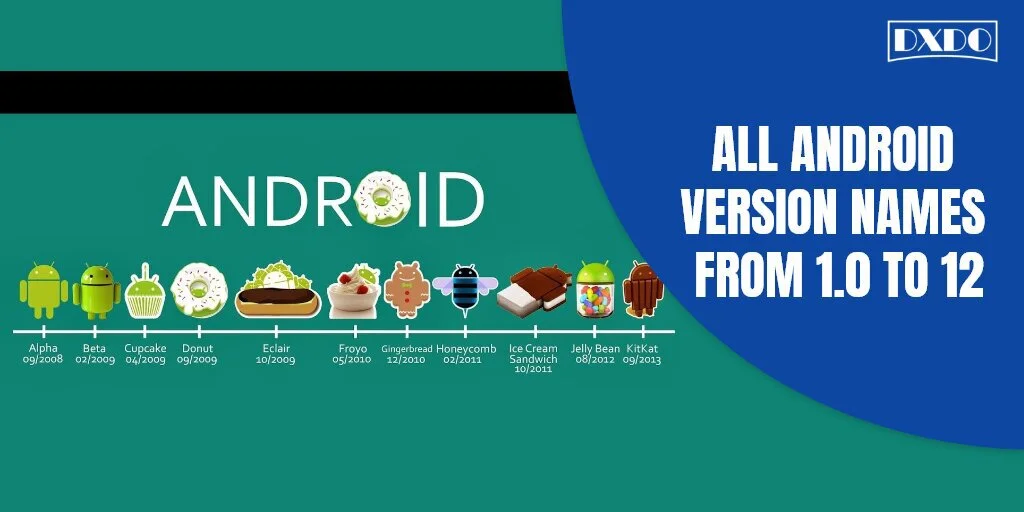Android is the best, most famous, and vastly used Operating System. Almost all the smart devices use this Operating System owned by Google Inc. There is an old Operating System named Linux, and Android is the latest version of that system. This system is specially developed for smart devices. With time, the developers made many modifications to this system and introduced many upgraded versions with improved features.
Previously, it was a separate company named Android Inc. in 2005. It was created by Andy Rubin, Rich Miner, and Nick Sears. After that, when the company started growing, Google acquired it for $50 million. The first Android Smartphone was released on September 23, 2008. After that, Google introduced 15 versions and continued to do so.
Why are Android Versions Named After Food?
Google and Android OS named their latest Android version on desserts such as Cupcake, Donut, and KitKat. One of the people from Google Inc said that the Android System is used by over a billion smart devices and these devices make our lives sweet, which is why they named their latest version after the dessert. Also, they arrange the version name in alphabetic order.
List of Android Versions from A to Z
Android and Google are working together and launching new versions of Android from time to time used by companies in their gadgets. Android is the biggest system used commonly in smart devices. There is a list of all Android versions with their names and functions to help you in comprehending all the versions. The list is mentioned below.
1. Android 1.0 – No Official Name
Android 1.0 is the first and official version that was introduced in 2008. This first version has the Google Calendar, Maps, Search, Sync, Talk, Quick Messaging, Media player, Notifications alert in the status bar, Wallpaper, YouTube Video Player, Alarm Clock, Calculator, Dial-er, Pictures Gallery, Wi-Fi, and Bluetooth assistance. As it is the first version, it assists the Web Browser in displaying HTML and XHTML web pages, camera, and approach web email server (POP3, IMAP4, and SMTP).

Release Date: September 23, 2008
API level: 1
Highlights
- Contains almost all Google Applications like Maps, Browser, and Calendar.
- Allow Camera and Drag down the Notification bar.
- Gmail addition, Contacts, and Google Management.
- Wireless Assistance for Wi-Fi and Bluetooth.
2. Android 1.1 – No Official Name
This Android 1.1 is the second on the list and also does not have any food-like name. And according to the report, it is same as beta. Also, it supports Third-party devices, Recording, Video playback, and much more.
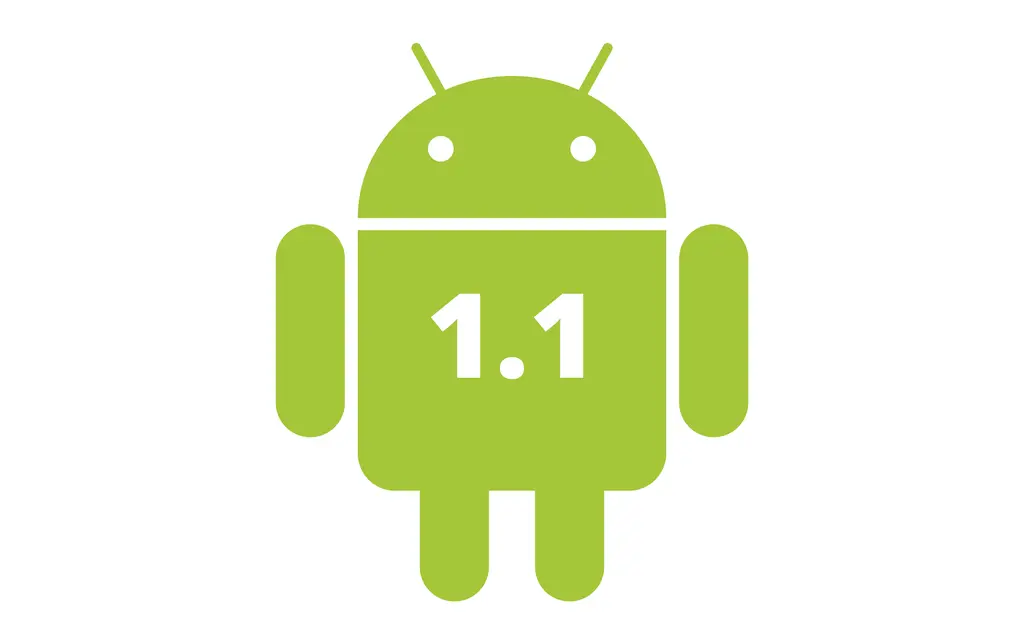
Release Date: February 9, 2009
API Level: 2
Highlights
- Show Particulars and Analysis for sites.
- Insert and Save Supplement in the message.
- Offer comprehensive information by tapping on the business.
3. Android 1.5 Cupcake
The Android version 1.5 is the 3rd in the list but is the first one that has the code name as its identity. Its code name is based on the dessert food Cupcake. Cupcake has the 2.6.27 Linus Kernel. It assists third-party devices, recordings, and playback. It supports playback in the MPEG-4 format. It also supports other features like Copy/Paste, Translation, Video Uploading, Picasa, and History View.
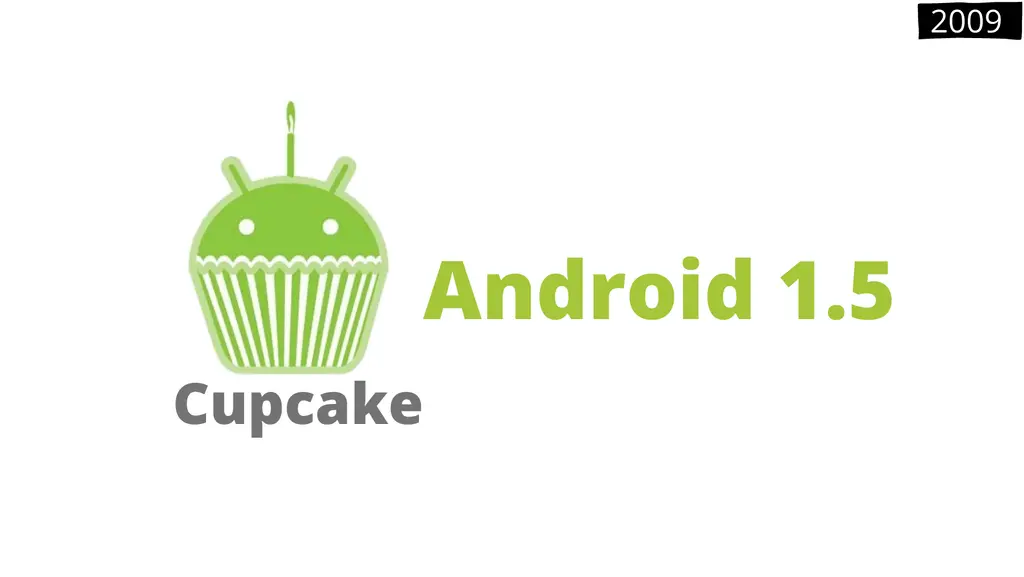
Release Date: April 27, 2009
API Level: 3
Highlights
- Display Keyboard and find Features.
- Load Videos and Pictures.
- Copy/Paste feature and video records.
- Assists with MPEG4 and 3GP layouts.
4. Android 1.6 Donut
Android 1.6, named Donut, was released in 2009 with several functions like searching with voice and text, history bookmark, contacts, string text speak, camera approach, multi-files selection, text to speech, and WVGA display dimension.

Release Date: September 15, 2009
API Level: 4
Highlights
- Power Control Widget for handling Wi-Fi, Bluetooth, GPS, etc.
- Gallery and Camera quick toggling features.
- WVGA Screen Resolution Speed.
- Technology Support for CDMA/EVDO, 802.1x, VPNs, and a Text-to-speech Engine.
- Speed improvements for Camera and Searching applications.
- Quick Search Box.
5. Android 2.0 Éclair
Android 2.0 was released with the Name Eclair. It was themed on Linux kernel 2.6.29. It comprises numerous new functions such as extended Sync, Microsoft Email Support, Bluetooth 2.1, the ability to click a Contact Picture and choose to Call, SMS, the capability to find all protected SMS, MMS, delete the eldest robotic-ally when the clear edge is stretched, Minor API, and bug fixes.
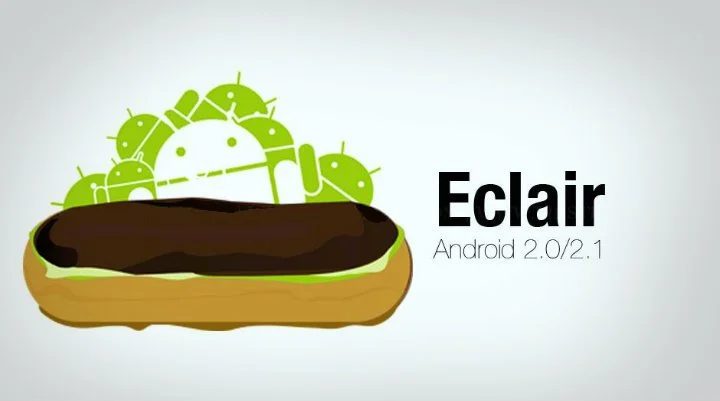
Release Date: October 26, 2009
API Level: 5 – 7
Highlights
- Comprised of Modernize UI.
- Connect Bluetooth 2.1.
- Provided with enhanced Google Map.
- Little API alterations.
- Assists with Live and animated Wallpapers.
6. Android 2.2 Froyo
The Android 2.2 other is named Froyo and themed on Linux kernel 2.6.32. It comprises numerous functions like rapidity, retention, performance optimization. JIT compiling, Combining Chrome’s V8, JavaScript engine in the Browser app, assisting Android Cloud to Messaging service, Adobe Flash aid, Security informs, and Performance upgrading.
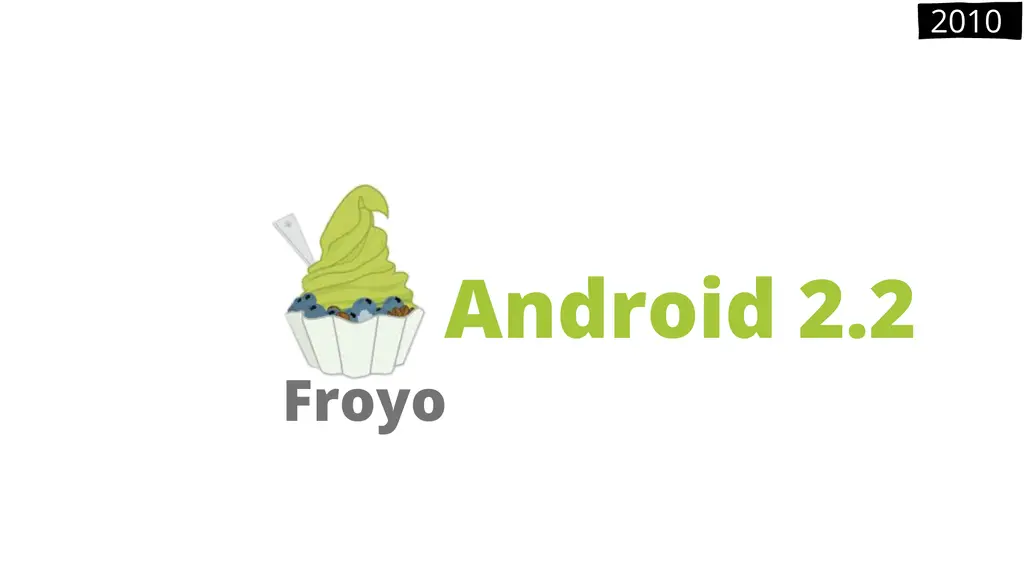
Release Date: May 20, 2010
API Level: 8
Highlights
- Assists in Animated GIFs and aggregate keyboard languages.
- Fastness and execution enhancement.
- Transfer file assists in the Browser.
- Assist quantitative and character set passwords to intensify privacy.
- Enhanced sympathy with car-case and headsets.
- Wi-Fi aid Hotspot features.
7. Android 2.3 Gingerbread
The Android 2.3 Gingerbread is themed on Linux kernel 2.6.35. It comprises the given modifications like assistance for spare-large display size and dimensions, good and attractive user interface, speedy copy/paste, term selection by holding, aid Near Field Communication (NFC), headphone virtualization, and a new Download Manager. It has developed bug fixes, voice or video communication via Google Talk, network execution, G mail app, and battery ratio set a voice finding a bug, and Google Wallet aid.

Release Date: December 6, 2010
API Level: 9 – 10
Highlights
- Modify Copy and Paste features.
- Provides enhance UI design.
- Aid for VP8 and WebM video layout.
- Video calling and Social Networking feature.
- Easy-to-use keyboard with quicker and connected typing.
8. Android 3.0 Honeycomb
The Android 3.0 named Honeycomb is the first tab Operating System themed on Linux kernel 2.6.36. Like others, it also comprises enhanced Hardware support, Google Books, Secure data connectivity problems after Airplane mode, Hardware rushing, Assist for multi-core processor, Inserts system Bar, Easy multitasking by clicking Recent App in system Bar, Links for USB devices, Aid for sticks and game-pads, Wi-Fi lock, Reform the keyboard fast typing, Rapid approach to camera, and holo-graphic UI for tabs.
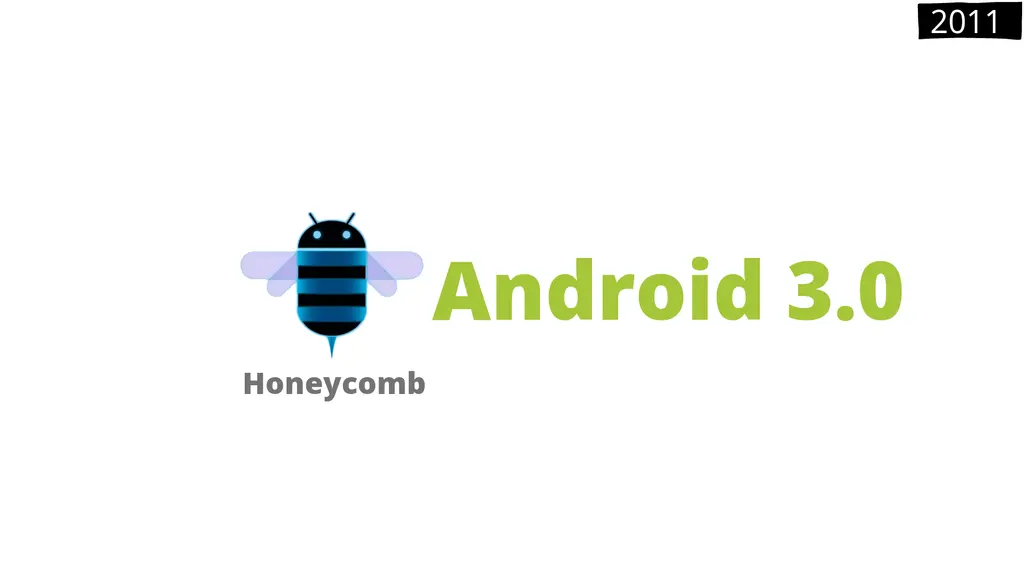
Release Date: February 22, 2011
API Level: 11 – 13
Highlights
- Gmail, Contacts, Camera, and Gallery Enhancement.
- Assist passwords with difficult characters.
- Enhance 3D UI and firm storage.
- Assists in Multi-procedures and Modern Apps for simple display.
- Media Synchronize from SD Card.
- Menu bar for Application holds.
9. Android 4.0 Ice Cream Sandwich
The Android 4.0.1 named Ice Cream Sandwich is themed on Linux kernel 3.0.1. Officially it is the last Adobe System Flash player supporter. This also has many special functionalities like enhanced copy/paste features, build-in picture editor, secure slight bugs, an enhancement to visuals, spell-inspection, improved camera, alterations to Holo UI with new Roboto font family, parting of widgets in a new label, joined screenshot, and better error adjustment on the keyboard.

Release Date: October 18, 2011
API Level: 14 – 15
Highlights
- It can spell verifying functions.
- Provided with Wi-Fi option with improvement.
- Picture Decoration feature and on-screen buttons.
- Open with face repair.
- Similar card appears for app-shift.
- Enhanced video signal with high dimension.
- Good Camera action.
- Skill to open 16 tabs in the web browser.
10. Android 4.1 Jelly Bean
The Android 4.1 named Jelly Bean was presented at the Google I/O conference. It improves the following like good user UI, raise convenience, notification, set bugs, one finger movement to expand/collapse notifications, lock screen betterment, aggregate user accounts, new clock app, Bluetooth aid, volume for the call, 4K dimension help, domestic emoji aid, and bug fixes. The base of this system is Linux kernel 3.0.31.
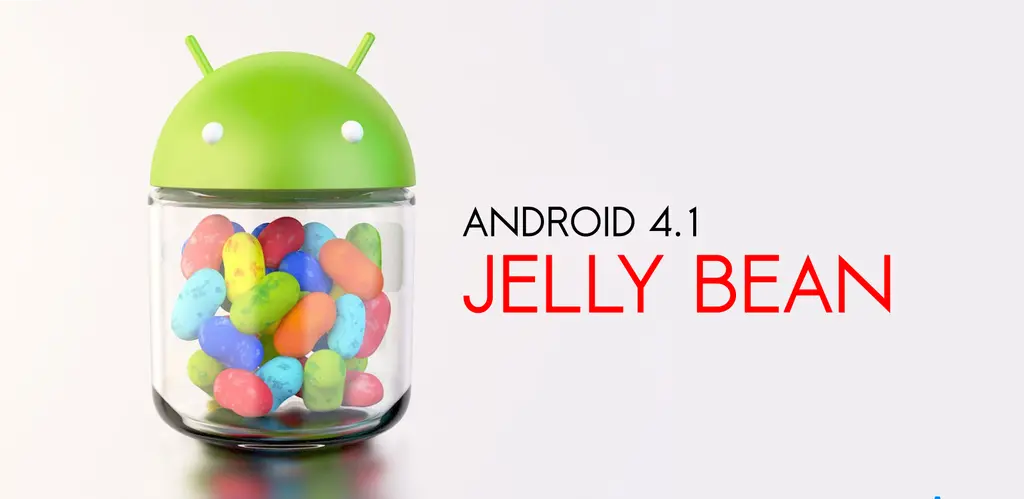
Release Date: July 9, 2012
API Level: 16 – 18
Highlights
- Aid USB Audio device.
- Provided with enhanced Camera App feature.
- More Secure Privacy enhancement.
- Aggregate user accounts.
- It has 4k dimensions aid.
11. Android 4.4 KitKat
The Android 4.4 is named KitKat. In the start, it is coded as Key Lime Pie. The least essential amount of RAM is available to Android is 340 MB. The additional devices with less MB of RAM must account for themselves as low RAM devices. It comprises numerous novel functions such as timer no lengthier show valiant hours, wireless production skill, WebViews are created on Chromium Engine, device batching, inbuilt display record function, enhanced app skills, camera app lots Google+ pictures as an alternative of Gallery.
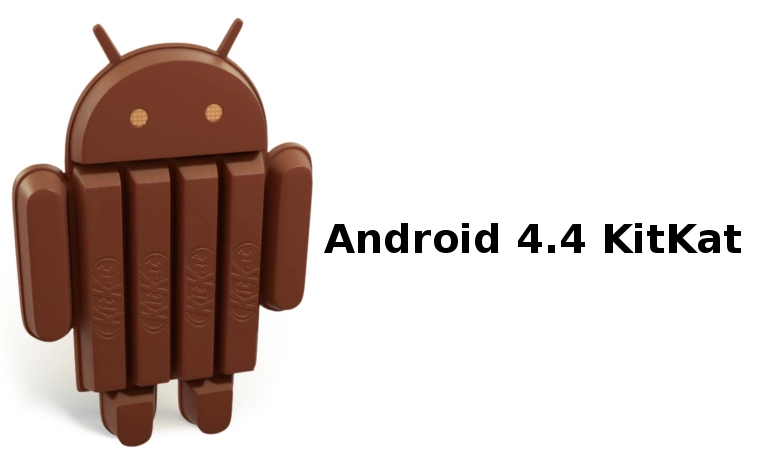
Release Date: October 31, 2013
API Level: 19 – 20
Highlights
- It has Smoother Caller ID.
- Offers Offline music assists.
- UI enhanced for alarm and google map routing.
- Animated ideograms and emojis to the Google keyboard.
- KitKat has an OK Google function that permits an approach to Google to the users without stirring your smartphones.
12. Android 5.0 Lollipop
Android 5.0 Lollipop is originally named Android L. It is formally presented in November 2014. It offers numerous functions like reshaped user UI, assist for 64-bit CPUs, aid for previews, sensible design, Plan Volta for battery life enhancement, numerous user versions, audio contribution, and output via USB strategies, link Wi-Fi systems, assists for numerous SIM cards, mean defense, high-explanation voice calls, natural Wi-Fi calling assist.
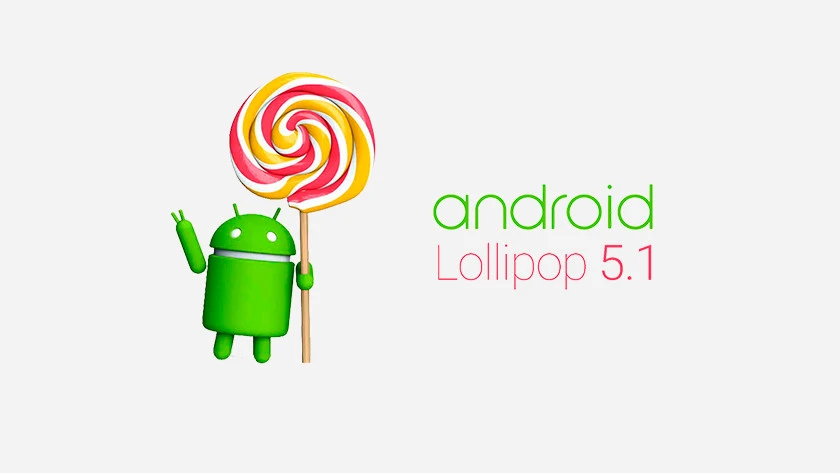
Release Date: November 12, 2014
API Level: 21- 22
Highlights
- Offers Improved device safety.
- Notifications can be checked from the lock display.
- Improved and enhanced UI.
- Inbuilt battery collector functions.
- Novel material project.
- Restored steering bar.
13. Android 6.0 Marshmallow
Android 6.0 Marshmallow is revealed below the codename Android M for Nexus 5 and Nexus 6 phones, and the Nexus 9 tab. On October 5, 2015, Android released Marshmallow for all android means. It comprises numerous fresh functions such as App Standby functions, presents the Doze mode to protect battery life, natural impression reader assists, run time consent requirements, USB-C assist, Unicode 7.0 & 8.0 emoji aid.
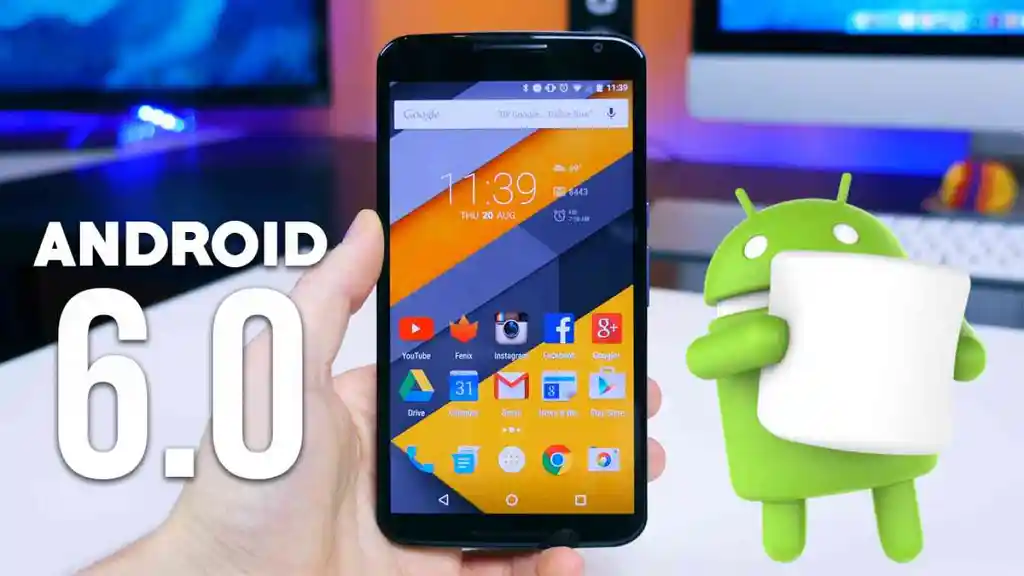
Release Date: October 5, 2015
API Level: 23
Highlights
- Assists Pattern readers
- Sort C USB care.
- Features Multi-window mode.
- Sleep Mode for the redeemable battery.
- Dynamic permission system.
- Practice google tabs and enhanced Copy-pasting.
14. Android 7.0 Nougat
Android 7.0, named Nougat, is the main issuance for the Android OS. It is an original code-name like Android N. It is the first issue like the developer preview; also workshop pictures for the Nexus means. This issue contains features like file-created encoding, zoom in the display, multi-window backing, Data Saver function, JIT compiler makes 75% quicker app download, picture-in-picture sustenance, and backing director APIs.
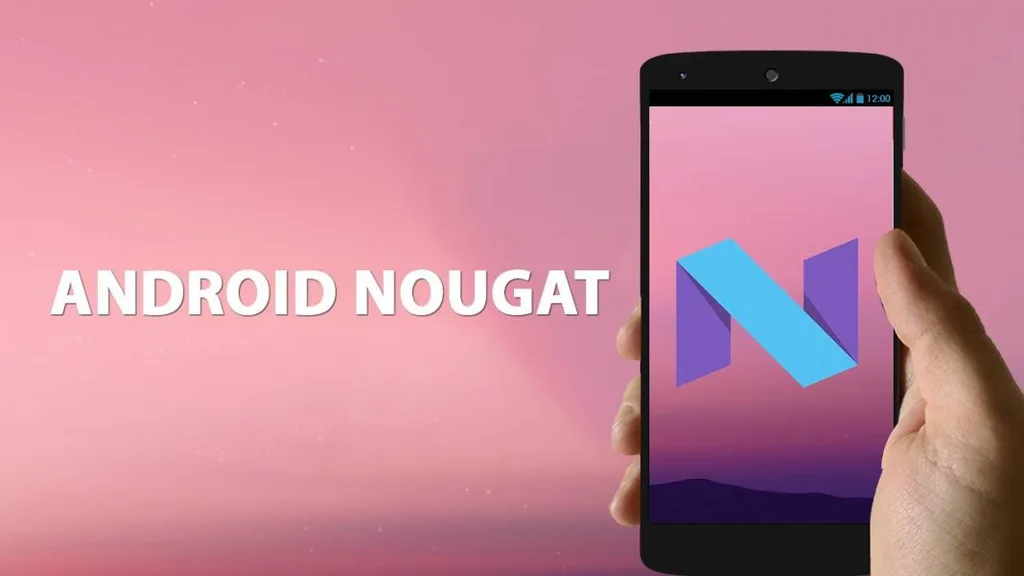
Release Date: August 22, 2016
API Level: 24
Highlights
- Offer multitasking and rip-display mode.
- Storage manager improvements.
- Instant setting ties.
- Screen touch improvements.
- Improved setting app.
- Online response to messages and announcements without introductory apps.
15. Android 8.0 Oreo
Android 8.0 Oreo is the 8th in the series, and the key issue of the Android OS is also the first for developer review as well. This also provides some advanced features like picture-in-picture backing, upkeep for Unicode 10.0 emoji, efficient settings, notification stations, notification dots, 2x quicker boot time, Google Play safety, Combined printing assistance, and Neural network API.
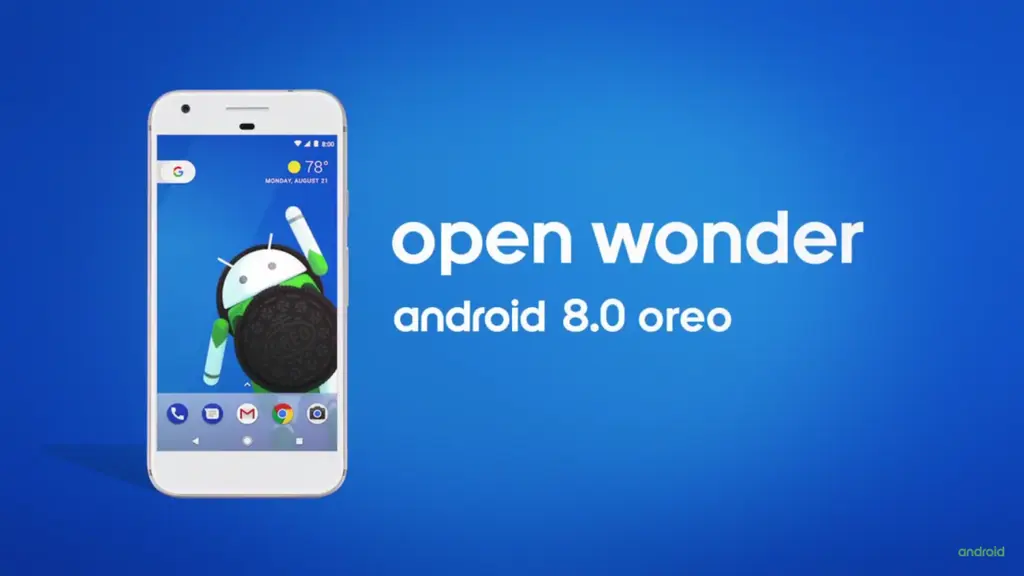
Release Date: August 21, 2017
API Level: 26
Highlights
- Multi-screen facility.
- Facilitate Picture-in-Picture mode.
- Notification means and sleeps notification mode.
- Google Play assistance and novel emoji styling.
- Adaptive icons and smart text creation.
16. Android 9 Pie
Android 9.0 is also named Pie and is the 9th key release of the Android OS. It is the first public and preview thrown by Google in 2018. It is formally issued in 2018 with the following functions: the clock has stirred to the left of the notify bar, the screenshot button is attached, and the battery percentage is shown on screen.
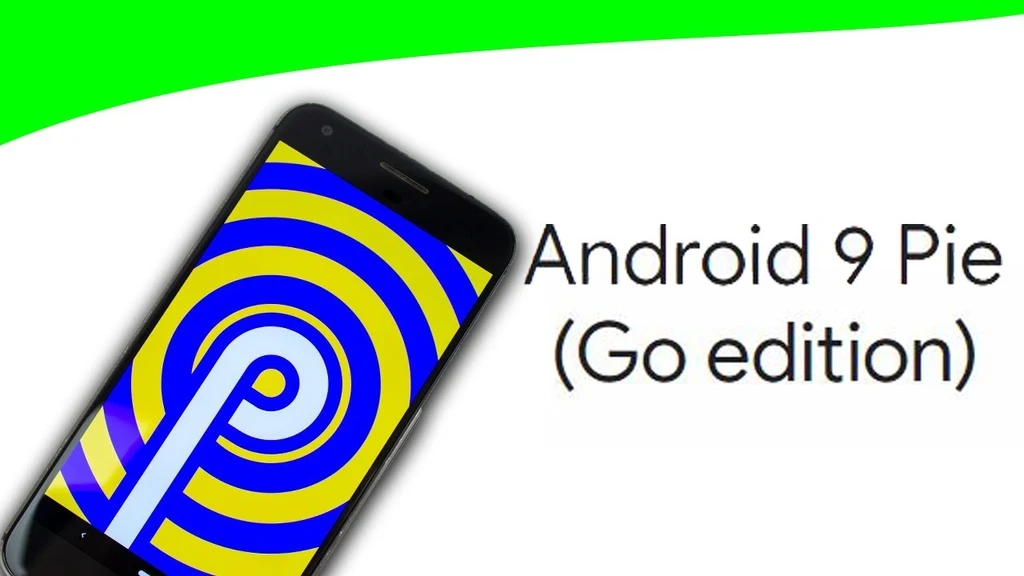
Release Date: August 6, 2018
API Level: 28
Highlights
- Audio amplifier with chosen to speak options.
- Artificial intelligence (AI) connection.
- Adaptive battery and sharpness with background limits
- Multi-camera stance with the other attached camera.
- New sign steering and app activities.
- Novel screenshot shortcut and approachable menu.
- Quicker screen revolution and edge display aid.
17. Android 10
Android 10 is the widespread version of Android. It is designed under the codename Android Q. This OS is originally presented by Google, and it is the primary beta release on a similar day, and the second beta was released in April. The actual usable release of this version is dated Sep. It has functions such as new approvals to approach location in the background, fluctuating setting sheet, assist for an AV1 video codec, aid for biometric verification, and backing the WPA3 Wi-Fi safety.
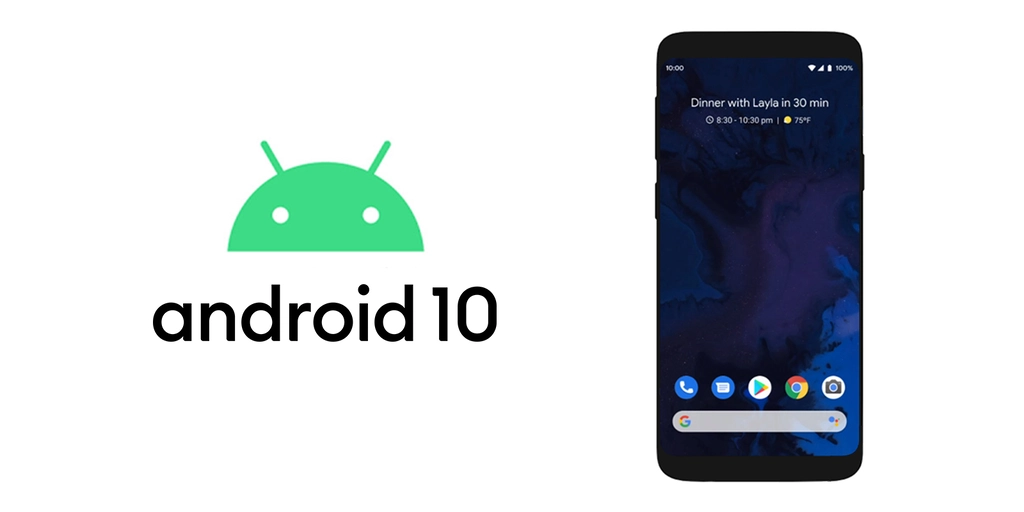
Release Date: September 3, 2019
API Level: 29
Highlights
- Backing for foldable smart devices with an elastic screen.
- Night mode for eyes coziness.
- Steering control over sign earlier and in-built.
- An audio speaker with crystal clear sound.
- Keen response proposals for all messaging apps.
- Live slogan for media singing on a smart device.
18. Android 11
Android 11 OS is the 11th large issue of Android and Google. It is the 18th releaser of OS that is issued in 2020. Also, the settled naming system of Android, created on deserts, is ended since Android 10. Thus then, this OS has exclusive to Android 11.
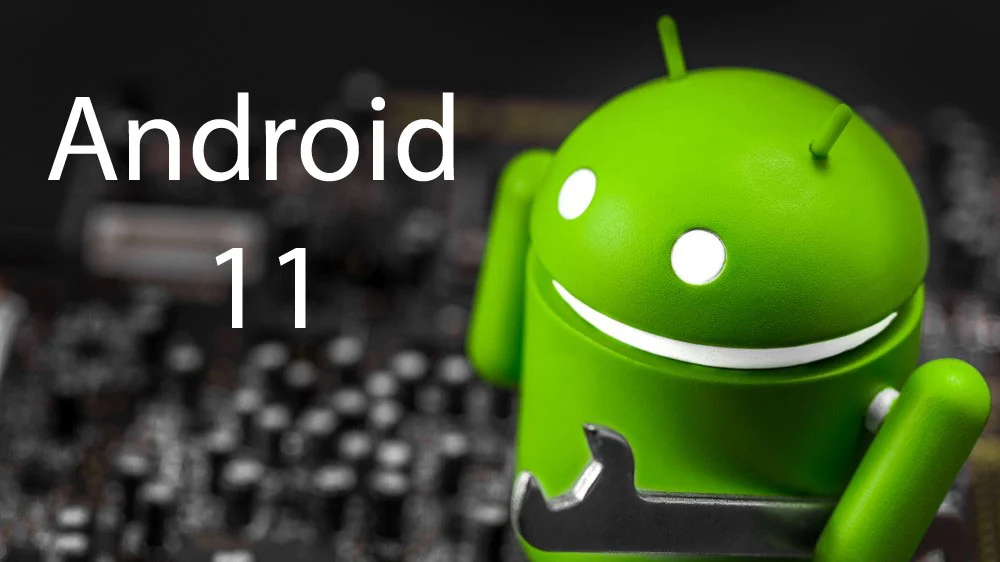
Release Date: September 8, 2020
API Level: 30
Highlights
- Natural screen demo for your assistance.
- Mute notifications via video.
- Rise touch sympathy.
- Provide notification history for convenience.
- Auto cancel application approvals options are available.
19. Android 12
Android 12 carries even more private, nontoxic and critical pieces of knowledge on your mean. It function a totally recreated UI, novel secrecy that is developed for your security and allow you to switch, and more unified methods to get exactly to your play or switch to a novel mean.
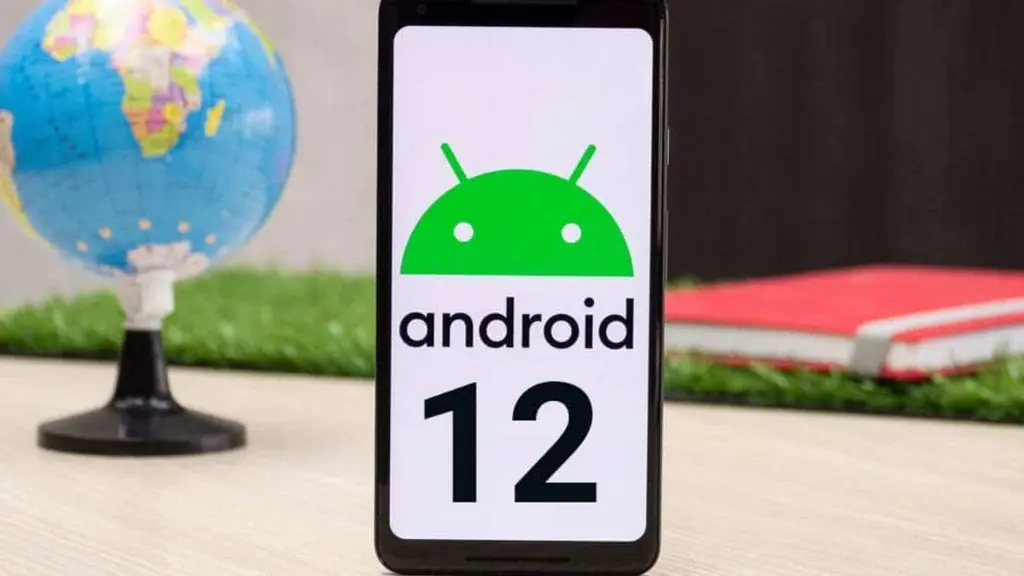
Release Date: October 4, 2021
API Level: 31
Highlights
- An edge-aggressive reshape.
- Color recreation option for a better experience.
- Mic and camera pointers and clips.
- Estimated location consents for more convenient use.
- Confidentiality Control panel.
- Remote compute essentials.
20. Android 12L
Android 12L is a fresh UI system with the sense that you can make it expressive, vibrant, and private. You can increase your app with reshaped Doodad, AppFinding, Game Mode, and Codecs. It assists new securities like secrecy dashboard and rough location. Advance output with the rich gratified supplement, cooler blurs, better inherent correcting, and much more.
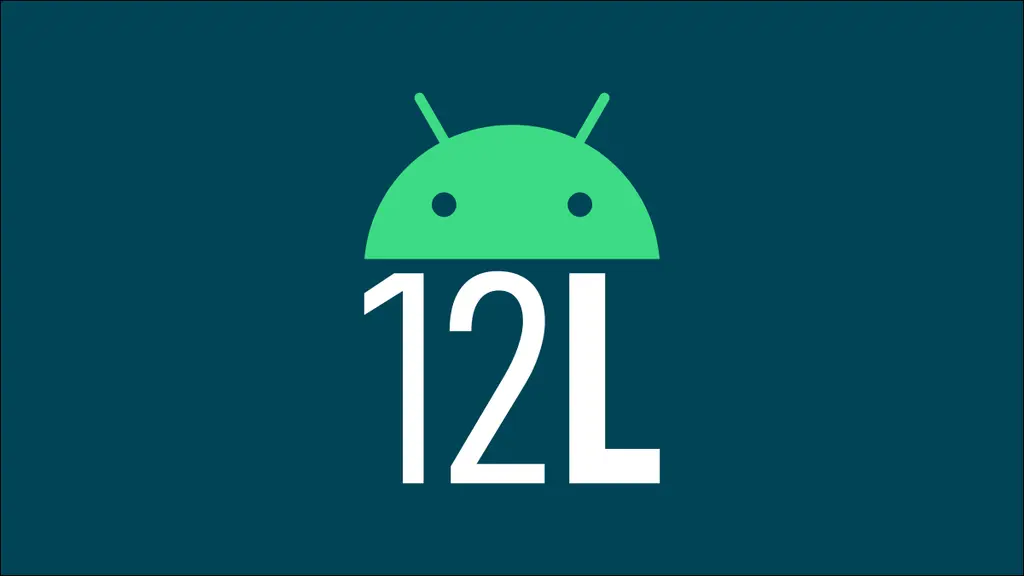
Release Date: October 2021
API Level: 32
Highlights
- Creates a runtime situation.
- Enables to manage Android Studio with this.
- Check the Android 12 SDK and gadgets.
- Analysis of the performance deviations for all apps.
- Variations for applications directing that may have pretentious your application.
- Verify your app executing via all movements to look for matters.
- Apprise your app directing beta channels or other collections.
Final Words
These are all versions that Android or Google released from the start till now, and they are making continuous improvements in these released systems. Previously, they named their issued system on the desserts because they feel that OS brings sweetness in their lives, but now they removed these dessert name from the 10th version of this system release.
You can get a guide about the features of every OS and their issuance date, their compatibility with other systems or devices, and much more from the above discussion. You can easily select your smart device after comprehending these versions. You can also share this guide with others to enhance their knowledge about the Android versions.
